#blackcap raspberry
Explore tagged Tumblr posts
Text
I... What? I eat blackcaps every summer. That's what blue raspberry is supposed to taste like? I can't recall what blue raspberry flavored things actually taste like, aside from extremely sugary.
I think I need to try eating something with blue raspberry flavor and then black caps to compare the taste this summer
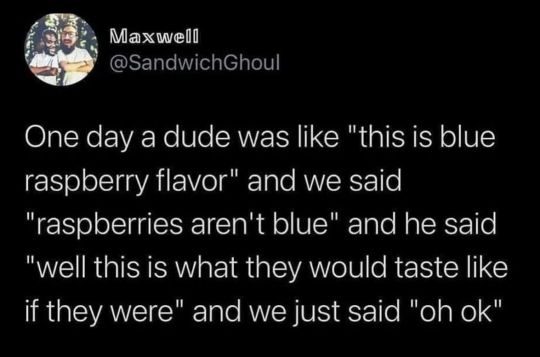
30K notes
·
View notes
Text
Raspberries my beloved 😍😍
I fucking love when you're in season, you're going to make the best jam 😋
#also blackcaps#but raspberries are my fav#there's so many patches in the backyard#got fresh berries for all the yummy treats#osdd system#did osdd#osdd 1b#did system#🐕���
0 notes
Text

🩷MAHOU DEITIES: MY MELODY!!🩷
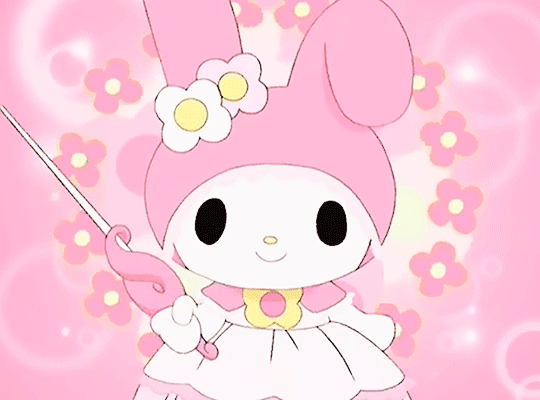

Welcome to the second entry of Mahou Deities! Today we’re talking about My Melody!!
She is the deity of honesty and dreams, this may not be a very obvious choice but if you know about Onegai My Melody you know that one of her main powers is turning nightmares into dreams! She’s also known to have a pure, honest heart and a generally good-natured personality which makes honesty a perfect fit for her domain, this also applies to her connection to dreams as dreams are born from you’re most honest wants and needs!!
Her other correspondences are;
❥ Month: January
❥ Planet: The Moon
❥ Zodiac sign: Cancer
❥ Colors: pink, lavender, red, and white
❥ Foods: cherries, raspberries, blackcaps, bunch berries, almond flavored sweets, sakura flavored things, and generally anything sweet
❥ Scents: cherry blossoms, sweet pea flowers, almond blossom, cherry jam, red berries, almond butter, milk cream
❥ Flowers: sakura blossom, orchid, hollyhock, lamprocapnos, daffodil, daisy, impatiens
❥ Crystals/stones: red agate, amethyst, cherry creek agate, angelite, moonstone, garnet

#irl mahou shoujo#irl magical girl#mahou shoujo#magical girl#mahouism#mahoublr#pop culture magic#pop culture witchcraft#sanrio#hello kitty#my melody#onegai my melody#radically queer not radqueer#radically queer#radical queerness#radical queer#paraphile community#paraphile safe#paraphilia#paraphiles please interact#pro transid#transid safe#transid community#transid#pro consang#pro consent#pro contradictory labels#pro conabuse
11 notes
·
View notes
Text
It makes me so happy that I get to enjoy gardening!!! Even though it's just on a little balcony with containers it's honestly doing very well. Even though the balcony is fully covered and gets very very little direct sunlight. Even though my so-called dix-huit jours radishes are long past day dix-huit and are just barely on their second set of true leaves and certainly not swelling at the roots yet. I've got peas and beans climbing all over the place and my lilac bushes both survived the winter and bloomed even more than last year and 2 of my 3 bee balm plants came back strong and one is getting ready to flower already and my RASPBERRIES. OH MY GOD. I'm glad that they're in a container because if they had the chance to be in the ground they would have taken over at least double the territory they had gotten the previous year. And all three of the raspberries that I planted last year came back full force and I found a local nursery and bought a blackcap raspberry bush and a blackberry bush and planted them in the little gaps in the same planter with the understanding that this was an as-is housing situation for them and that I'd give them plenty of water and compost for nutrients to help them thrive if they could but that I wasn't going to mess with the existing raspberries to give them more room so they'd need to fight it out amongst themselves and the blackberry is already starting to set some buds and the blackcap has gone from a cane with 2 tiny little side branches to being a cane with some flourishing tiny side branches and it's been less than a week since the blackcaps were planted and it just makes me so happy to see everyone flourishing and the sprouts getting so excited and the beans and peas climbing up nice and tall and the squashes and melons putting out a few true leaves and I'm just so excited!!!!!!
3 notes
·
View notes
Text






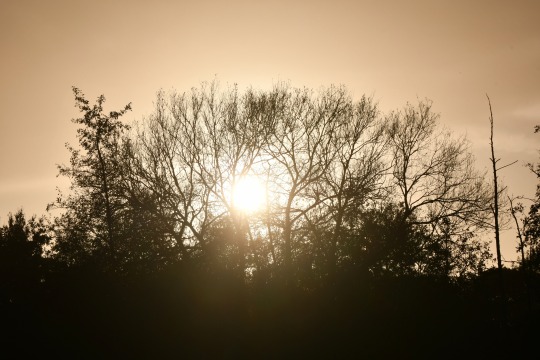



Ten of my favourite photos I took in October 2024 and month summary
The photos are of; fly agaric at Matley Wood in the New Forest, shaggy scalycaps at Lakeside Country Park, Kingfisher at Blashford Lakes, Speckled Wood, Migrant Hawker, Mottled shieldbugs and view at Lakeside, autumn leaves in Winchester and Michaelmas daisies and New Forest Pony at Lymington.
October was a fantastic month of fungi for me. In the peak season I treasured seeing many spectacular, gorgeous and fascinating species including fly agaric, devil's fingers, amethyst deceiver, yellow stagshorn, shaggy scalycap, candlesnuff fungi, bleeding fairy helmet, eyelash fungi, parasol, turkey tail, earthballs, panthercap, false death cap, sulphur tuft and waxcaps. It has also been nice to see slime mould including red raspberry slime mould at a few places and lichen and moss.
I had a brilliant birdwatching month too with some special species seen heading well into autumn. Key species seen were a fair few Kingfishers, Water Rail, Great White Egret, Greenshank, Avocet, Lapwing, Jack Snipe, Sanderling, Common Gull, Pochard, Gadwall, Pintail, Wigeon, Shoveler, Teal, Goosander, Brent Geese, Egyptian Geese, Little Grebe, Marsh Harriers, Siskin, Nuthatch, Great Spotted Woodpecker, Green Woodpecker, lots of Jays seen in their active time of year, notable Ravens at Lakeside and home, Dunnock, Blackcap at Lakeside, Cetti's Warbler, Wren and Long-tailed Tit. Turnstones and Ringed Plover seen well, Tufted Duck, Mute Swan, Moorhen, Coots and Greylag Geese at Lakeside, Jackdaw and Magpie seen a lot, Red Kite in Winchester, Sparrowhawk, Kestrel, Chaffinch, Grey Wagtail seen well and Pied Wagtail were also great to see. Glorious scenes came this month with the return of the Redwings a key bird of the autumn and winter, I was elated to see a Hen Harrier and I was thrilled to see the Winchester Peregrines and Lakeside Great Crested Grebes including their chicks a lot.
There were some nice butterflies to see still with lots of Speckled Woods especially at Lakeside, Red Admiral and Peacock and I was amazed to see a Hummingbird Hawk-moth in Winchester as well as other moths. Dragonflies and damselflies continued to shine this month with so many splendid views of Migrant Hawkers and Southern Hawker and Common Darters too. My first Willow Emerald Damselfly of the year was special to see at Fishlake Meadows. Other insects I enjoyed seeing this month were Mottled shieldbugs and other shieldbugs, wasps and hornets. It was good to see lots of spiders this month too including Long-bodied Cellar spider at home and snails and slugs. In terms of mammals I enjoyed seeing the also active Grey Squirrels a few times, Roe and Fallow Deers and New Forest Ponies.
Key flowers seen this month included Michaelmas daisies, forget-me-not, comfrey, lots of oxtongue, dandelion, tormentil, bell heather, common mallow, white deadnettle, stinging nettle, daisy, water mint, vervain, viper's-bugloss, horseweed, common and ivy-leaved toadflax, hogweed, yarrow, hedge woundwort, ragwort, gorse, dock, herb-Robert and wood avens which brought some wonderful colour as it quietened down for flowers. Wild carrot, teasel, hemp agrimony and spear thistle were among pretty seed heads enjoyed this month with cleavers enjoyed too. There was also a great display of berries this month again with rose hips, hawthorn berries, guelder rose berries, dogwood berries, nightshade berries and snowberries creating vibrant scenes.
And of course this month the splendour of autumn's colour was captivating and wholesome to observe. I also enjoyed taking in many great other vistas this month including coast, reedbed and general wetland, rivers and New Forest heaths and woodland. There were some special sky scenes observed this month too. Have a great November all.
#kingfisher#hen harrier#water rail#autumn#fly agaric#shaggy scalycap#amethyst deceiver#devil's-fingers#speckled wood#migrant hawker#lakeside country park#lymington#splendid#flowers#forget-me-not#hemp agrimony#world#earth#europe#nature#outdoors#england#october#memories#hawthorn#rose hips#marsh harrier#avocet#pintail#pochard
7 notes
·
View notes
Text
The gift post by @rosegardeninwinter got me thinking, because I’m definitely a food as a gift person. (Seriously usually would rather go out for a fancy meal than get something fancy) and so I present the Types of Food I think would be each of their favorites to get as gifts, based partly on how rare it was for them to get growing up.
Peeta’s favorite things are always foraged things. Blackcap raspberries, morels, dandelions, ramps, persimmons, pawpaws, acorn flour pancakes. Herbal teas. Fresh fruits and vegetables especially are his thing, after growing up mostly on stale bread. And of course, squirrel.
Katniss is the complete opposite. Sweet rolls, cheese buns, homemade egg noodles with butter or gravy, meatballs, cheesy potatoes, and sweets. So much chocolate and frosting and ice cream and maple taffy and drop candy and doughnuts and candied orange slices. And caramel. Peeta makes her caramel and she makes herself sick on it the first time.
They both love “exotic” fruit, once they can get it regularly. They buy cases of oranges and peel them for each other and eat them until it makes their mouths break out. Same once they discover pineapple. They grow melons in their little garden patch. Every late spring they get bags and bags of cherries, every late summer crates and crates of peaches. It gets so gotdamn hot in the summer all they wanna eat is fruit salads with plenty of whip cream. Katniss never gets over the taste of cold fruit straight from the fridge and she’ll wake up some nights and sit in front of the fridge door just eating cold strawberries she’d foraged earlier in the week.
Anyway, yeah. Food as gifts and food as healing
98 notes
·
View notes
Note
hey did you know that the blue raspberry flavour is actually modeled after the blackcap raspberry (which is white so idk why it's called blackcap) but the reason they called it blue raspberry and used blue food dye is because when it was made in the late 50s people didn't trust red food dye (it was later proven to be a carcinogen and banned) so they used blue food dye instead to make people trust it more and increase sales and it started off as a snow one flavour and then got really popular
I didn’t know this at all
#I have red dye 40 or whatever the hell it is 💪💪#it’s probably safe by now so says American food regulations
2 notes
·
View notes
Text
I have now planted everything in my living fence! I have elderberry, hazelnut, mulberry, American plum, American persimmon, blackcap raspberry, and honeyberry/haskap. And even better, everything except the honeyberry was free! The raspberries were already on the property when I arrived, the mulberry planted itself (naturally), and the rest I acquired over the past two years through people I know. I have already been feasting on the raspberries and mulberries (they are like little candies!) and am looking forward to a few years out when I can share the bounties with my neighbors.
1 note
·
View note
Note
‘ blue-flavored candy is always the best flavor of candy like what the heck. blue raspberries aren’t even a thing. we are literally eating the color blue as a flavor! ’ / izuku and neito but izuku shouldn’t be allowed to eat blue-flavoured anything

"Blue raspberry is based on the blackcap raspberry, flavor wise. The reason it's blue was to differentiate it from the other red fruit flavorings on the market, and because of regulations emerging on certain red dyes at the time. Also, the best flavor of candy is grape. Another Class A fumble."
1 note
·
View note
Text
@dawnforger-fr
Saw your tags on the fruit poll, and figured I’d help you figure out what kind of blackberry you have.
There are lots of rubus that can be found in California, including lots of native ones and some invasive ones.
The one I most commonly see, especially in inland areas dry and hot enough enough that the grassy landscape turns gold all summer, is an invasive species named Rubus armeniacus, Himalayan blackberry. That one usually has leaves-of-five instead of leaves-of-three, and the stems are thick, often as thick than a pinky at the base or if it’s older thicker than a thumb (1 inch). They have ridges along the stems (because of these ridges, if you clip off a section of stem and look at the cross section, it would be hexagonal). These stems are smooth with relatively few thorns, which are as big as the thorns on garden roses. They’re sharp and long enough to stab me even through jeans. The thorns are sparse enough that you should be able to carefully grab the bare spots on the stems to move them without touching any thorns. They don’t tend to creep along the ground as often as the others, and are usually strong enough to grow up or diagonally unsupported for a few feet in length before they get long/heavy enough for the tip to weigh back to the ground to form bramble thickets— although they will also climb fences and trees and cover and smother smaller shrubs. The seeds in the blackberries are large. They get stuck in my molars sometimes. When I see these I tend to try to eat as many as possible so that they don’t spread as bad.
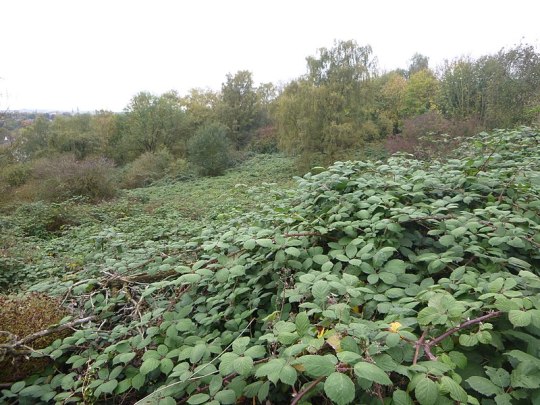
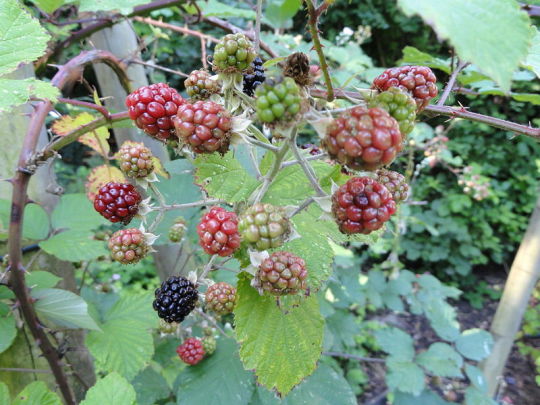

I also see California blackberry (mentioned in the post) a lot, but usually in wetter areas such as on the coast, or near creeks and other riparian zones. These ones always have leaves-of-three. The stems are much thinner, more akin to the width of a vein or tendon on the back of your hand (~1 cm), and have no ridges (if you cut the stem and looked at it you would see a round cross section). They are coated in tiny needle like thorns, so dense that it’s impossible to grab a stem by your fingertips without touching a few thorns. These thorns are soft enough that they can’t prick you through a sturdy layer of fabric, although they might cause a stem to cling to a flannel shirt like Velcro. California blackberry stems are thin and weak, and usually crawl on the ground or trailing on top of fences or plant matter. Often I will see it in the same thicket as Himalayan blackberry, using the much stiffer Himalayan stems as support to reach the same height. If it can support its own weight it’s definitely not California blackberry. The berries have much smaller seeds (that don’t tend to get caught in my teeth), and a lot of people prefer the berry flavor (although the growing conditions and ripeness may affect flavor a lot more than the species of blackberry does.)
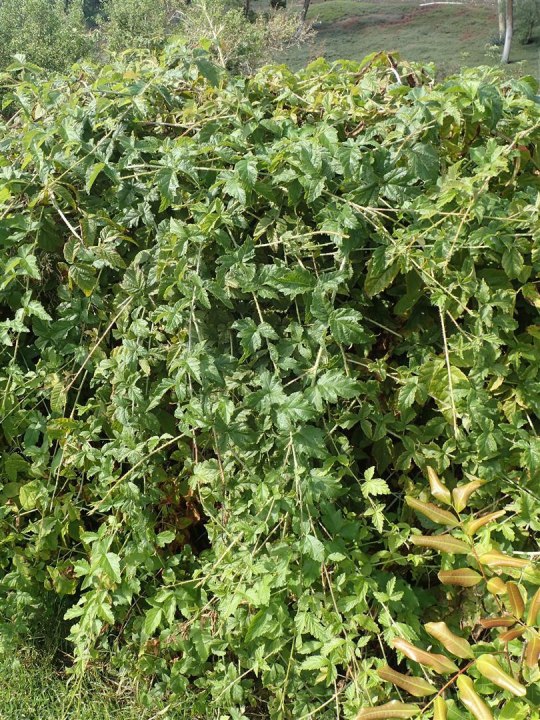
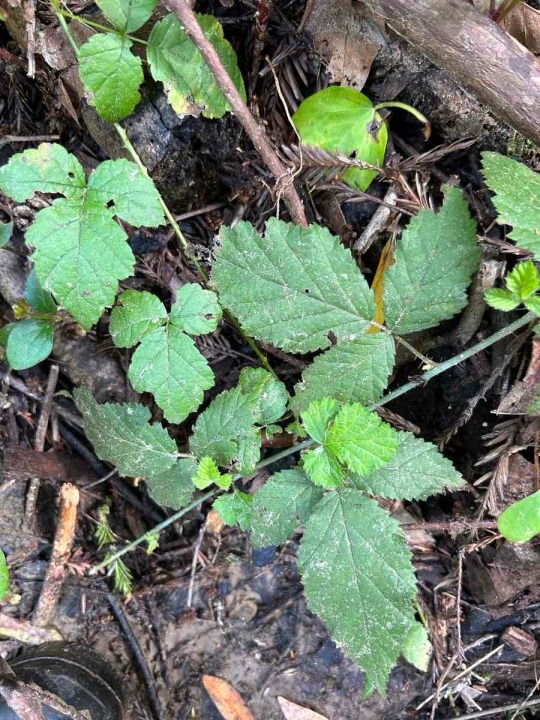

Occasionally thickets that contain both of the above will also contain hybrids. The hybrids are really wonky from their genetic diversity— for example, sometimes they have as dense of a pattern of thorns as California blackberry does, but they’re HUGE thorns that grow as long as the ones Himalayan blackberries have. Don’t worry about this one, they’re pretty rare. Rare enough that I can’t find any links or pictures.
Whitebark raspberry seems to be the only other native rubus that seems likely to be called a blackberry, and it’s comparatively a lot more rare, at least in my area (I’m in Northern California). Whitebark raspberry, also called blackcap raspberry, black raspberry, or blue raspberry, looks somewhat similar to California blackberry, but it can stand up unsupported, has leaves-of-five as well as leaves-of-three, and the backs of the leaves and often stems are coated in a silvery substance. These plants produce dark raspberries that look like blackberries, but are less glossy/shiny. These berries are what “blue raspberry” artificial flavor is trying to imitate.
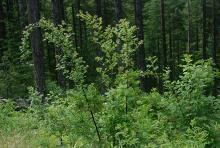

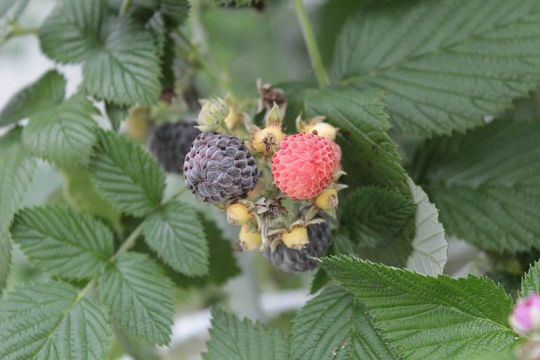
Thimbleberry is also a rubus, and so are salmonberry, snow raspberry, San Diego raspberry, and red raspberry, but we can rule all of them out because their berries don’t look like blackberries. Rough fruit berry, Rubus lasiococcus, is a blackberry, but it’s supposed to stay red and hairy instead of turning black, so it isn’t easy to mistake for a California blackberry.
Other than that, I don’t know of any blackberry or blackberry-adjacent plants that grow wild in California.
Hope that this was interesting! If you ever happen to find out which one your blackberries are, I’d be super interested in hearing.
Also, once you have finished reading this post, if you were to press like, it would be mildly helpful. That way I know to stop editing and adding more information because you would not be seeing any further edits anymore, lol
#sorry about the alt account#I didn’t want to bother my followers so I decided to post on an account that doesn’t have any
1 note
·
View note
Text
Soon

16 notes
·
View notes
Text

Me during most of the year: I like the idea of foraging but i don't fully trust my ID skills beyond a couple basic things so it's more aspirational atm than anything else
Me during blackcap season: i am a child of the forest, i live off the boons of mother earth, i will shank you if you intrude upon my berry picking territory
#my favorite spot is along the top of a narrow gorge next to a secure nuclear research lab#so that's probably going to be what kills me#blackcaps#black raspberry#foraging#wild edibles
27 notes
·
View notes
Text
no it's def different. apparently the flavor's meant to mimic the flavor of blackcap raspberries? so it's def raspberry.
What the fuck even is blue raspberry???
Do... Do you mean blueberries????????
39 notes
·
View notes
Text
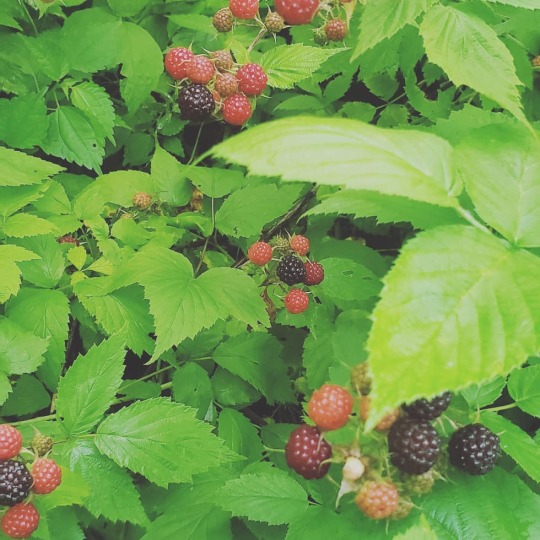

45 notes
·
View notes
Note
m/f/m is the worst of the worst when it comes to het so it's not shocking you like it
god you are so right - m/m/f has just as much potential to it. No one talks about how equality might lie within a man being held tenderly between two lovers.
But also, side note - did you know there is an actual blue raspberry fruit? It's not exactly the blue raspberry flavor we know, which is a mix of pineapple, cherries, etc, dyed blue to make it more appetizing back in the 50s when there was a scare over the color red and artificial flavors and whatnot - now it exists to differentiate raspberry, watermelon, cherry, and strawberry! Watermelon is often paired with green/red (so not to get confused with apple, which is always green), cherry a vivid red, raspberry a purple-ish red, and strawberry a pink!
But, the actual blue raspberry originally comes from the plant known as rubus leucodermis, a type of raspberry also known as the whitebark raspberry, blackcap raspberry or blue raspberry. And it's native to North America! So while people tend to assume there is no actual blue raspberry out there, there is! (though it's usually purple or black when ripened, so don't look at the photoshop images and get too excited)
32 notes
·
View notes
Photo
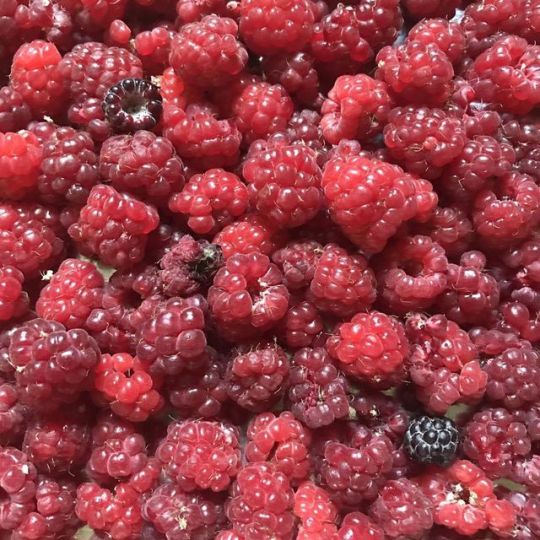
Summer bounty! #raspberries #blackcaps (at South New Berlin, New York) https://www.instagram.com/p/B0bPYa_gRGF/?igshid=ykqic7isx9ng
0 notes